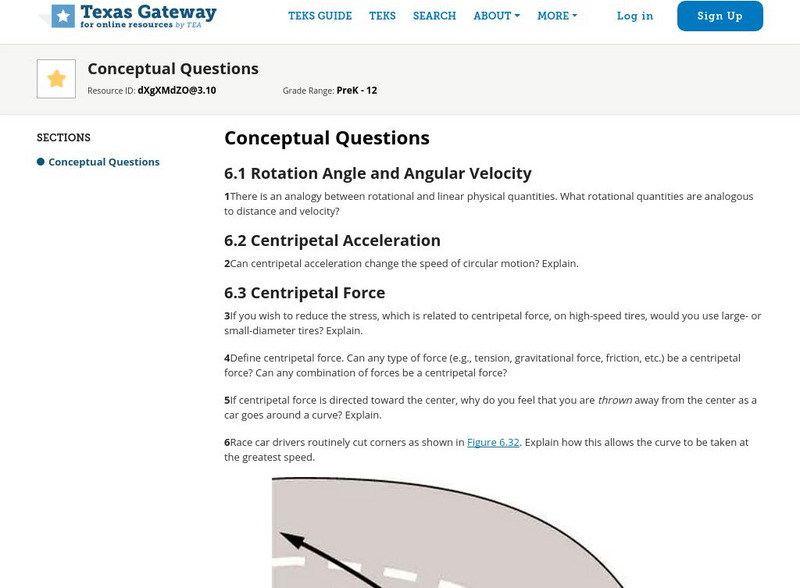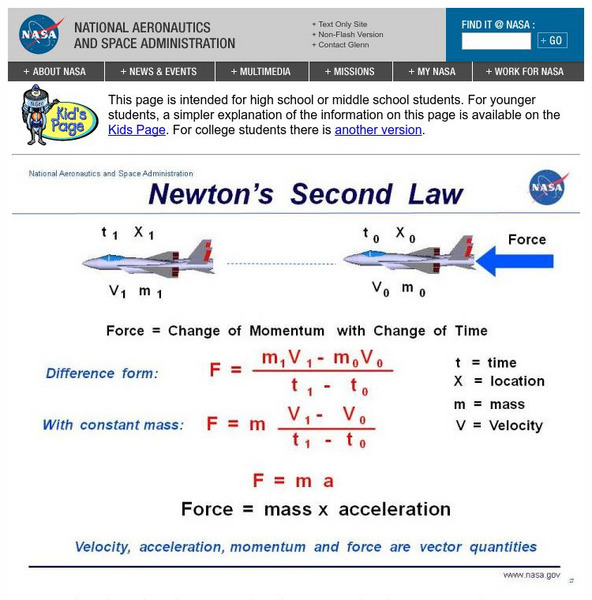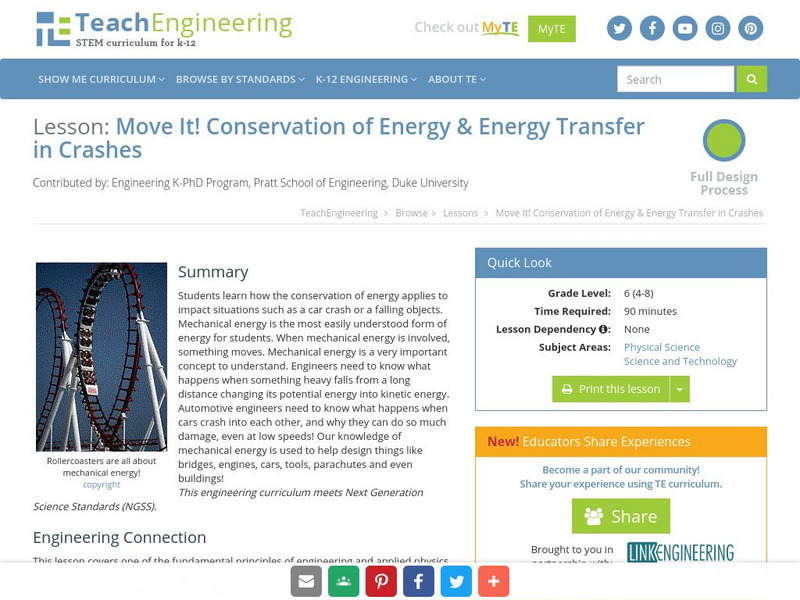Texas Education Agency
Texas Gateway: Ap Physics: Uniform Circular Motion and Gravitation: Questions
This is a list of 23 questions covering the major concepts of Chapter 6: Uniform Circular Motion and Gravitation from the AP Physics online text.
Texas Education Agency
Texas Gateway: Uniform Circular Motion and Gravitation: Problems and Exercises
This page offers a list of 50 problems/exercises to solve based on the content of Chapter 6: Uniform Circular Motion and Gravitation from the AP Physics online text.
Khan Academy
Khan Academy: Start: How Do Computers Simulate the Motion of Virtual Particles?
In this lesson we'll explore how we use fairly simple physics to draw particles which move according to the forces we feel in the real world (such as wind & gravity).
Physics Classroom
The Physics Classroom: Circular Motion Principles for Satellites
From The Physics Classroom. Uses easy- to-understand language to discuss how circular motion principles apply to the motion of satellites. Describes the tangential velocity and centripetal acceleration of a satellite. Includes many...
Physics Classroom
The Physics Classroom: Circular, Satellite, Rotational: Uniform Circular Motion
Uniform circular motion can be described as the motion of an object in a circle at a constant speed. This animation depicts this by means of a vector arrow.
Texas Education Agency
Texas Gateway: Ap Physics: Uniform Circular Motion and Gravitation: Summary
This page features a summary of each section of Chapter 6: Uniform Circular Motion and Gravitation from the AP Physics online text.
Physics Classroom
The Physics Classroom: Circular and Satellite Motion: Principles for Satellites
Students explore how a satellite's motion is governed by the same physics principles and described by the same mathematical equations.
Physics Classroom
The Physics Classroom: Kinetic Energy
Kinetic energy is defined and explained--learning exercises are included to assess your understanding.
NASA
Nasa: Beginner's Guide to Aerodynamics
This site from NASA provides a graphic depicting Newton's second law. Graphic is accompanied by an explanation. Part of a larger site with additional information on Newton's laws.
Khan Academy
Khan Academy: Angles and Units
The application of trigonometry concepts to calculate complex forces of angular velocity and acceleration is illustrated.
Science and Mathematics Initiative for Learning Enhancement (SMILE)
Smile: Momentum Conserved
This site by the Illinois Institute of Technology gives a Lab activity in which young scholars use a variety of toys to discover Newton's second law and momentum conservation. Newton's cradle, skate boards, and a toy motorcycle are...
TeachEngineering
Teach Engineering: Move It!
Mechanical energy is the most easily understood form of energy for learners. When there is mechanical energy involved, something moves. Mechanical energy is a very important concept to understand. Engineers need to know what happens when...
Physics Classroom
The Physics Classroom: Vectors and Direction
A complete lesson/tutorial on vectors. Learn about vector addition, vector resolution, vector components, and resultants. Numerous examples and learning exercises are provided.
Wikimedia
Wikipedia: The Black Hole
This site examines the black hole as an object in astrophysics. Delve into this comprehensive resource that covers this concept from its history, to qualitative physics, the reality of black holes, mathematical physics and more.
Other
Wikibooks: Physics Study Guide
A handy resource that gives an overview of equations and definitions pertinent to an introductory, college-level physics course, with two of its three sections focusing on motion-related topics and principles.
Other
St. Chris Physics: The Physics of Skydiving
This illustration provides an overview of the scientific process of when a skydiver steps out of a plane.
Other
Fearof Physics: Videos
Looking for some more explanantion on a topic covered in physics class? This site contains videos that explore some physics concepts. Videos are broken down by topics. Some videos also give examples on how to solve problems.














